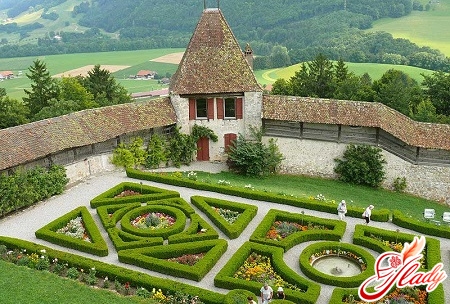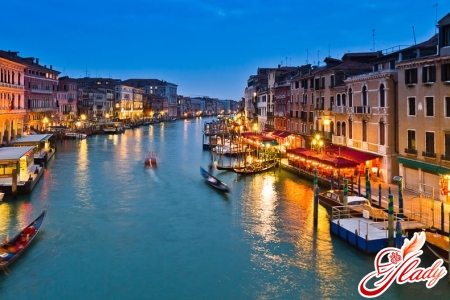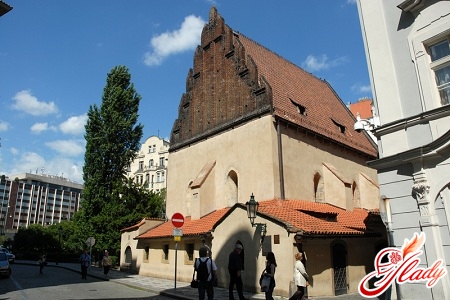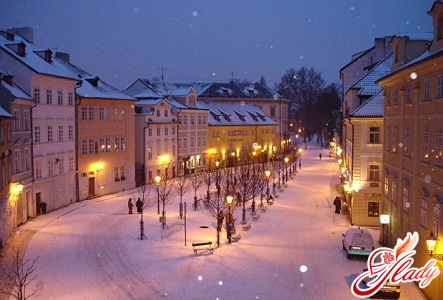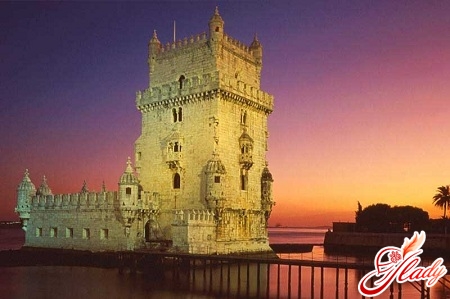 Do you want to know the secret to a successful trip toLisbon? It is not about the cost of your tickets, the level of comfort of your hotel rooms; and even the amazing sights of Lisbon are not the most important thing here. The success of your trip, first of all, depends on you. You just need to love the capital of Portugal. Sincerely, naively, without the slightest hint of pretense. As if you are falling in love for the first time and do not see any flaws in your beloved. Then, and only then, the city will reveal its most intimate secrets to you, there will always be a free table in cozy cafes, and the famous port wine will reveal to you all the shades of taste of this drink, sweet as love itself, as if you were a real sommelier. Lisbon will not let you get sad, it will raise your spirits with nimble yellow trams and colorful walls of old houses, beautifully decorated with azulejo mosaics.
Do you want to know the secret to a successful trip toLisbon? It is not about the cost of your tickets, the level of comfort of your hotel rooms; and even the amazing sights of Lisbon are not the most important thing here. The success of your trip, first of all, depends on you. You just need to love the capital of Portugal. Sincerely, naively, without the slightest hint of pretense. As if you are falling in love for the first time and do not see any flaws in your beloved. Then, and only then, the city will reveal its most intimate secrets to you, there will always be a free table in cozy cafes, and the famous port wine will reveal to you all the shades of taste of this drink, sweet as love itself, as if you were a real sommelier. Lisbon will not let you get sad, it will raise your spirits with nimble yellow trams and colorful walls of old houses, beautifully decorated with azulejo mosaics.
Life Against the Elements
Spread over seventeen hills in the verythe mouth of the Tagus River, the city, due to its geographical location, like a passing prize, was either the prey of the Phoenicians, or the coveted trophy of the ancient Romans, or the treasure obtained in a bloody duel by the Moors. And Lisbon absorbed all the shades of foreign culture and architecture, skillfully incorporating them into the overall picture of its appearance. Unfortunately, most of the sights dating back to the beginning of the city's history were destroyed by a strong earthquake, tsunami and fire in 1755. And if it were not for the Prime Minister, the Marquis of Pombal, you would hardly have managed to see even half of these unique testimonies to the rich history of Lisbon. Several areas of the city were almost unharmed by the natural disaster, and it is with them that you should begin your acquaintance with Lisbon.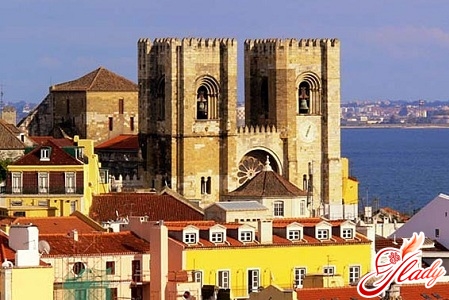
Up and down obliquely
Endless stairs, observation decks,which offer a unique view, funiculars and, of course, the famous Lisbon trams. Canary-yellow, they lift your spirits at first sight. And if you want to see all the sights of Lisbon, you should buy a ticket for one of the tram routes, and it is best to buy a ticket with the opportunity to ride on any route throughout the day. But first, it is still worth going up to one of the observation decks and looking at the city from above to see it as it appeared before the eyes of Vasco da Gama. From such a height, Lisbon does not overwhelm with its grandeur, it spreads out at your feet, inviting you to begin a journey along its cobbled streets.
Legends of Alfama
The Alfama district was formerly entirely owned byMoors, who left behind hunched houses that have not lost their beauty. The outer walls are completely decorated with azulejos. It seems as if you are walking along the streets along real canvases. Intricate mosaic drawings and paintings, shady cafes, old benches, ceramic souvenirs. And what a view of the river opens up here! It seems that the horizon dissolves in the blue waters. You want to cut out one of the gaps between the houses and take it home as a souvenir. By the way, there is a legend associated with the Tagus, telling about one of the main attractions of the Alfama district. An unsuspecting architect Terzi built a magnificent church in this district at the beginning of the seventeenth century, an example of Portuguese architectural art. And the church would have been named in accordance with the wishes of the then Pope, if not for a miracle. A boat washed up on the bank of the Tagus River - without oars, without rowers, only a pair of black ravens sat on the bow of this strange gift of the river. And at the bottom of the boat lay the body of Saint Vincent, brutally tortured by the Arabs. As soon as the boat landed, crows flew up from it and landed on the roof of the Lisbon Cathedral. After the crows had built a nest on the roof, the church authorities took this fact as a sign and named the church they had built San Vincent De Fort.
Sequel in Portuguese
The Portuguese have great respect forits history. Almost all the landmarks of Lisbon that appeared after the devastating disaster are an attempt to return the lost works of architects and builders of the past. The famous National Pantheon of Portugal contains relics associated with the name of Saint Egracia, the Great Martyr. But the construction of the church did not go as smoothly as the believers would have liked. João Antunes, a great architect of the time, began building the church in 1682. As a result, a masterpiece of Portuguese Baroque was to appear from beautiful pink marble. But João V quickly lost interest in the church and decided to build a city of kings instead, thus immortalizing his name in history. The construction of the church was stopped and then resumed. And this torment continued for three centuries. The magnificent Church of Saint Egracia became a kind of long-term construction project in Portuguese style, completed only in the twentieth century. From above, the church resembles a Greek cross, shimmering with all shades of pink in the rays of the sun.
Bethlehem and geography?
We arrived to the loud clatter of tram wheelsto the next pearl in the crown of Lisbon – the Jeronimos Monastery. It is located in the suburbs of Lisbon, Santa Maria de Bethlehem. This monastery has become a symbol of the greatest geographical discoveries of Portugal. It was founded in the fifteenth century by Henry the Navigator. It was within its walls that Vasco da Gama knelt all night, praying before his journey. And since the route to India was open, the monastery was attributed with mystical properties. By royal decree, in gratitude for the successful journey, all income from the sale of Indian spices was invested in additional buildings of the monastery, the construction of which continued until the nineteenth century. And if in most buildings in Europe, completed over a long period of time, the change of architectural styles depended on fashion, then in Lisbon even centuries-old unfinished construction projects are maintained in one architectural style.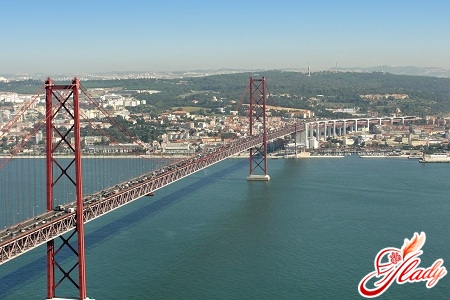
Plea in stone
Driving past the Basilica de Estrela church waswould be a crime. The white marble walls and the legend associated with the name of the most mysterious queen, Maria the First, make this church a symbol of a woman's frantic prayer to God. The childless queen asked in her prayers for ordinary female happiness - the birth of a son. And as a vow, she promised to build a church to the glory of God. Maria's prayers were heard, and she gave birth to a son. Immediately after his birth, the construction of the Basilica de Estrela began. But a few years later, a smallpox epidemic broke out in Portugal, and the only royal son died. The unfortunate mother went crazy. But the basilica still stands in Lisbon as evidence of what a woman is capable of for the sake of the happiness of being a mother.
Useful with pleasant
The good thing about Lisbon is that you cancombine business with pleasure. See the sights of Lisbon and shop in small shops, conveniently located on both sides of narrow streets. Here you can indulge your passion for shopping, focusing only on the size of your wallet. By the way, most goods in Portugal are produced only for the domestic market. And at the same time, they are all of very high quality. Exporting manufactured products to this EU country is prohibited, so all local goods can only be bought in Portugal and nowhere else. Lisbon is half an hour's drive from the nearest beach. So, tired of a rich and educational journey around the city, you can jump into a cozy taxi and wave to the Atlantic coast, exchanging historical beauty for the beach pleasures of Costa de Caparica. This is what a vacation in the only European capital awaits you, where there is no fuss and noise, where the only price for your love will be the incomparable pleasure of a short but bright trip.





